This paper is available for the academic year 2024-25.
The aim of the paper is to gain knowledge and understanding of the nature of structural variation across human language and its connection to human cognition. We will learn about language description and classification, systematic patterns of structure observed across languages, typological generalisations and language universals. We will also look at how different types of languages and structures are acquired and processed by their speakers and become familiar with empirical studies of acquisition and processing for a variety of languages with an emphasis on studies from non European languages. We will consider different theoretical views and explanations for typological generalisations and what might constrain the human capacity for language (functionalist, formal/Faculty of Language, domain general cognition). Students will be encouraged to develop a critical perspective and synthesize conceptual arguments and empirical evidence from linguistic and cognitive perspectives. We will further consider how language typology might be constrained by acquisition and processing and how it might influence aspects of acquisition and processing. For example, how, in situations of multilingualism, the typological similarity between the languages involved can explain patterns of acquisition and processing; conversely, how acquisition and processing constraints might explain emerging features in languages in contact. Similarly, how the timing or order of acquisition of specific phenomena might vary across languages in first language acquisition contrasting with universal aspects of linguistic development. These empirical questions will be related to more foundational questions: what is a possible human language, what enables and what limits linguistic diversity.
Indicative topics
Morpho-Syntactic typology
- Greenberg’s universals; word order, acquisition and processing of disharmonic word orders ; cognitive, syntactic and communication-based explanations for word order universals.
- Subjects across languages; ergative and nominative alignment; acquisition and processing of dative and of ergative alignment.
- Relative Clauses and Questions; Head internal RCs as a developmental pre-cursor of externally headed RCs. Noun Phrase Accessibility Hierarchy and Subject and Object Relatives in acquisition and processing.
- Subjects and argument realisation: polysynthesis, pronominal arguments, null arguments, radical drop languages; finiteness and Tense-aspect-mood morphology: free vs. bound morphemes; acquisition and processing of verbal morphology; converb structures; isolating languages and radical drop.
- Nominals: count/mass, classifiers, number marking, definiteness; L2 acquisition of a typologically dissimilar system. L2 transfer of count/mass features. Gender marking.
- Interrogatives and negation.
Semantic typology:
- Lexical concepts typologically and in cognition. Conceptual transfer in L2.
- Semantic universals and variation
- Language and thought
Sign Languages
- Words in sign languages: duality of patterning, SL phonology and iconicity, morphological processes.
- Parts of Speech, verbal agreement.
- Classifiers, Word Order, Clausal Structure
Language Typology and multilingualism
- Crosslinguistic Influence: Typological similarity, L1-L2 linguistic distance measures and cross-linguistic influence in L2.
- Creoles and L2 acquisition; revisiting creole exceptionalism
Preliminary Reading
Aikhenvald, Alexandra Y, and R. M. W Dixon. The Cambridge Handbook of Linguistic Typology. Cambridge: CUP, 2017.
Haspelmath, Martin, Ekkehard König, and Wulf Oesterreicher. Language Typology and Language Universals: An International Handbook. 1. Aufl. Walter de Gruyter GmbH Co.KG, 2001.
Song, Jae Jung. The Oxford Handbook of Linguistic Typology. OUP 2010.
Further Reading
Aboh, Enoch, and Michel deGraff. “A Null Theory of Creole Formation Based on Universal Grammar.” The Oxford Handbook of Universal Grammar. Oxford University Press, 2016. The Oxford Handbook of Universal Grammar, 2016. Print. Oxford Handbooks.
Coon, et al. The Oxford Handbook of Ergativity. 2017. OUP
Evans, Nicholas. “Semantic Typology.” The Oxford Handbook of Linguistic Typology. OUP, 2010.
Gleitman, Lila R, and Anna Papafragou. “New Perspectives on Language and Thought.” The Oxford Handbook of Thinking and Reasoning. OUP, 2012.
Haspelmath, Martin. “Human Linguisticality and the Building Blocks of Languages.” Frontiers in Psychology 10 (2020): 3056.
Newmeyer, Frederick J. Possible and Probable Languages: A Generative Perspective on Linguistic Typology. OUP 2005.
Pfau, et al. Sign Language : An International Handbook. De Gruyter Mouton, 2012.
Roberts, Ian. Parameter Hierarchies and Universal Grammar. OUP 2019
Sandler, Wendy, and Diane Lillo-Martin. Sign Language and Linguistic Universals. 2006.
Lectures: 16 lectures across Michaelmas and Lent Terms Seminars: 8 seminars dedicated to discussion of papers and data analysis Supervisions: 8 supervisions; Michaelmas: weeks 2, 4, 6; Lent: weeks 1, 4, 6 and 8, Easter: one revision supervision
Language Tutorial With your supervision partners (groups of 3) you will choose a (non European) language to work on throughout the year and characterise its typological properties for data-focused supervision assignments. At the end of Lent each supervision group will present a short language tutorial at the Li17 seminars, presenting the key typological characteristics of your chosen language and its interesting or challenging aspects.
i) Take home/coursework: A critical review essay of 1500 words to be submitted the first Monday of week 3 in Lent. ii) In person written exam (2 hours): one data question and one essay question
Dora Alexopoulou |


